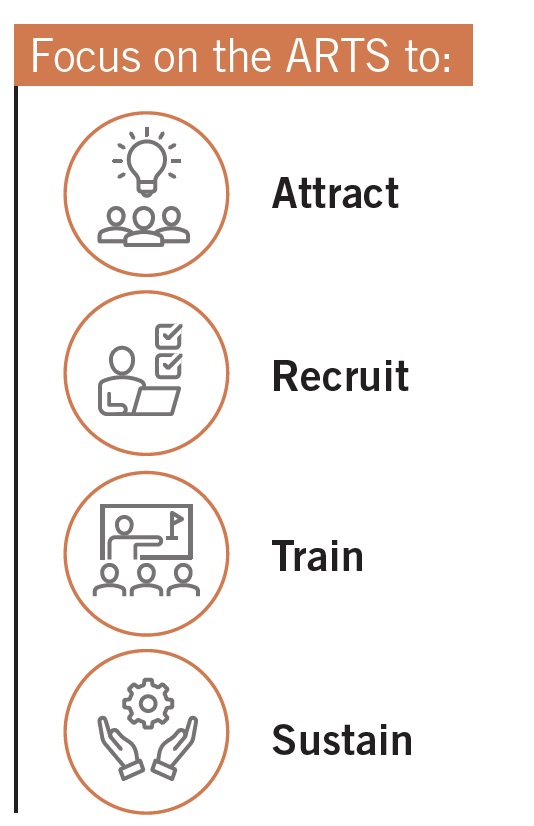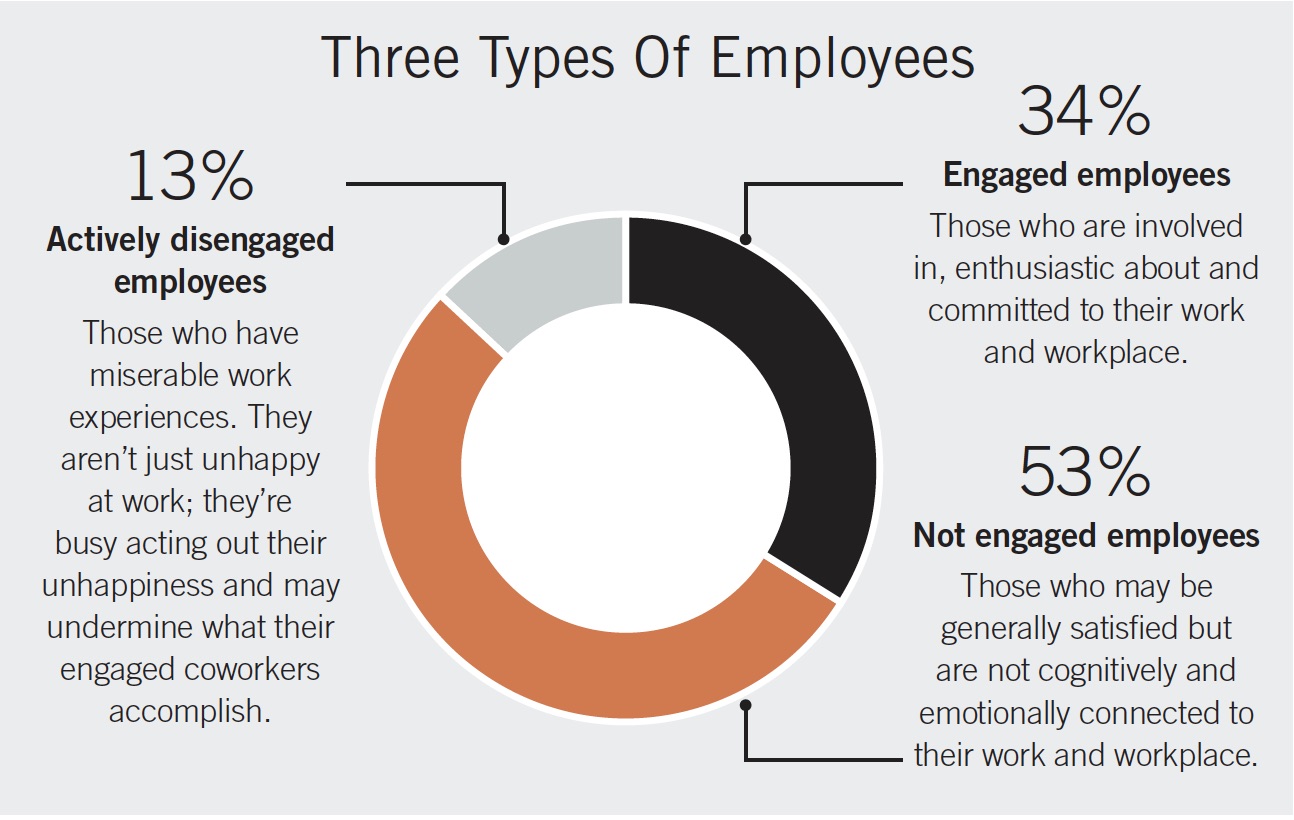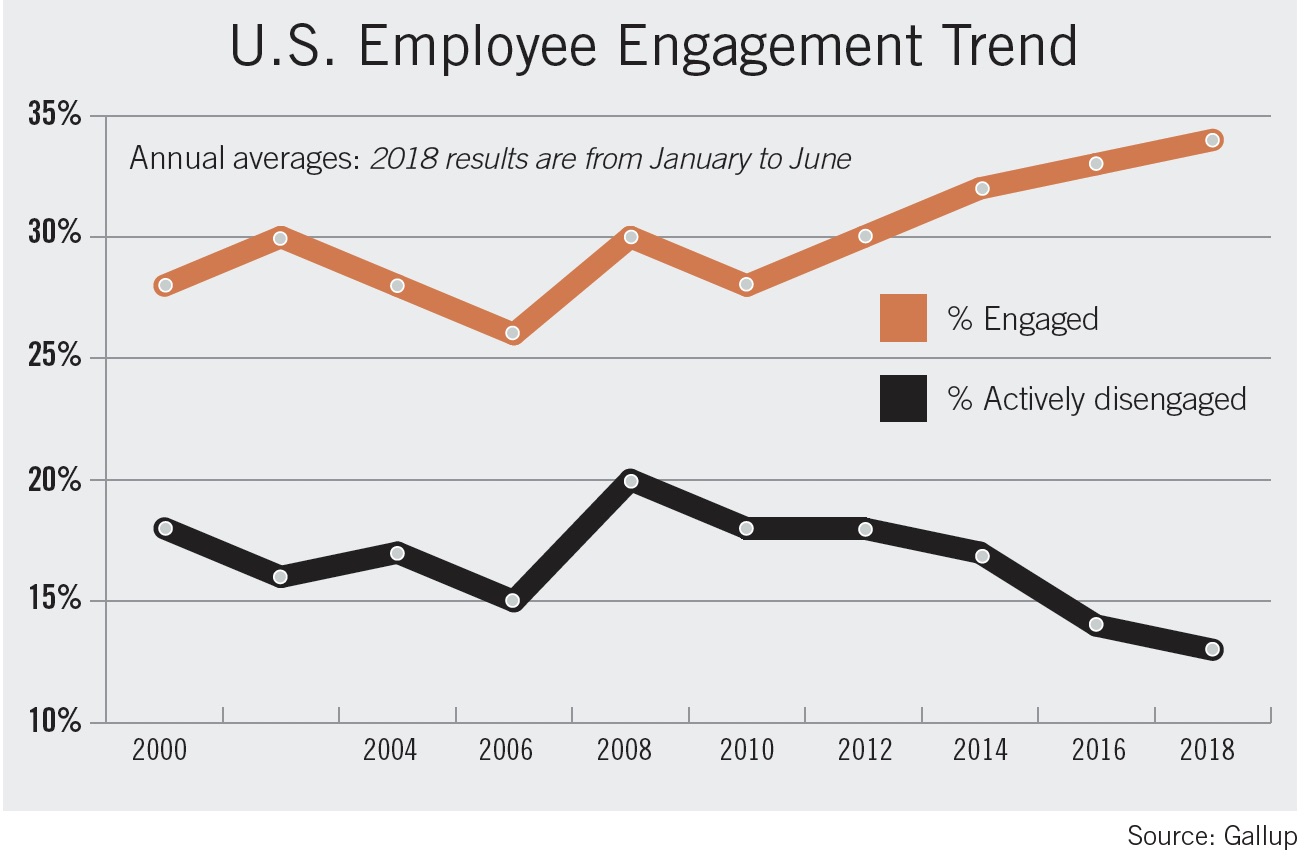Empower Your People To Thrive

Second in a three-part series.
The employee lifecycle encompasses the various stages of a person’s journey with an organization, from learning about it and joining it to thriving in it and separating from it. Many models of the employee lifecycle exist—some include four stages, others include six or more. In general, stages of the employee lifecycle can include attraction, recruitment, onboarding, development, retention and separation.
Attraction focuses on your company’s reputation, image or brand as perceived by employees, the local community and the market. Recruitment includes your company’s efforts to source and recruit new talent into the organization. Onboarding introduces new hires into the organization, orienting them to their role and the values, goals, norms and performance expectations of the organization. Development consists of your company’s continuous support of training to create skilled employees and provide career development. Retention involves your company’s efforts to ensure employees are satisfied and challenged. Separation encompasses your company’s approach to an employee’s exit from the organization, whether voluntary or involuntary, including mitigation of disruption to remaining employees.
 When it comes to your company’s diversity, equity and inclusion efforts, it helps to focus on four categories of strategies that an organization can implement. These are the ARTS of diversity, equity and inclusion.
When it comes to your company’s diversity, equity and inclusion efforts, it helps to focus on four categories of strategies that an organization can implement. These are the ARTS of diversity, equity and inclusion.
Attracting the community:
Strategies for building a desirable reputation, image or brand as perceived by employees, the local community and the market
Recruiting new employees:
Strategies for recruiting diverse talent into the organization
Training current employees:
Strategies for providing your employees with appropriate and relevant training and professional development opportunities in an equitable, inclusive environment
Sustaining current employees:
Strategies for engaging your employees to foster an equitable, inclusive environment, loyalty, innovation, motivation and productivity
Last month’s first article in this three-part series, "Think Beyond Diversity. Focus On Company Culture," challenged us to go beyond diversity and to focus on company culture by assessing its values, goals and norms. Once you have a well-established company culture with clearly defined values and goals, shift your focus toward diversity, equity and inclusion. What can you do to increase diversity within your organization? What can you do to foster an equitable, inclusive environment?
Start by examining the strategies you already have in place to attract the community, recruit new employees and train and sustain current employees:
For each ARTS category, what current strategies are in place?
- For each strategy you list, how does it impact the organization? Is it producing desirable results?
It may be helpful to partner with several individuals across the organization to complete this assessment, particularly if you have a larger organization. When it comes to training and sustaining your current workforce, different managers may have different approaches in place. You may uncover some great ideas to adopt across the organization. You might also uncover a difference between an intended strategy and actual execution.

As you review the results of your assessment, you may see areas that need attention, as well as strategies within each category that need to be corrected, adjusted or enhanced. In some cases, it may make sense to identify a new strategy to implement. In other cases, it may be more important to address a strategy that is already in place. To help you prioritize your focus areas, ask a few questions:
- How engaged are my current employees? What are the challenges with employee engagement?
- To meet my company’s goals, what skills need to be developed or sharpened? What talent needs to be hired?
- What positions are vacant, need to change or should be created to better accomplish the organization’s goals?
- What are the challenges with employee retention?
- What is my company’s reputation in the local community?
A primary consideration should be the health of your current organization. Just as a flight attendant instructs passengers to put on their own oxygen masks before assisting others, the internal health of your organization must be addressed before turning your attention outward. So, focus on the internally-facing ARTS categories to train and sustain current employees.
Having employees who are engaged and properly skilled to accomplish their work is vital for the success of your organization. If it is not healthy, you will have difficulty hiring and keeping good talent that will succeed and help your organization achieve its goals.
![]()
When budgets are tight, and even when they are not, training is often forgotten. But it is critical for the success of your company and the development of your team. Your employees need to be skilled in the latest techniques and technology, well-informed about the most recent legislation and laws, competent in their business skills, confident in their soft skills and engaged with their work. Without training, your business will not be able to keep up with change or remain competitive, which directly impacts your bottom line. So, invest in your people to support their success and earn their loyalty.
Here are a few strategies to consider:
- Build a solid onboarding program to ensure new hires are set up for success.
- Enable your employees to attend external job-related training.
- Implement bias training and encourage healthy, ongoing dialogue to minimize the impact of bias.
- Offer leadership and management training.
- Cross-train your employees in order to create an agile, collaborative workplace.
- Ask internal subject matter experts to train and share knowledge with others.
- Encourage coaching and mentoring opportunities.
![]()
Your employees drive your business forward. Without them, who would do the work? When it comes to sustaining your current employees, it is really about relationships: your relationship with your employees, as well as relationships among employees. As an employer, work to build an inclusive, equitable environment that cares for, values and supports every person in the organization , including both in-office and remote employees.
 Another way to look at it is through the lens of employee engagement. As described by Gallup, there are three types of employees:
Another way to look at it is through the lens of employee engagement. As described by Gallup, there are three types of employees:
- Engaged employees: Those who are involved in, enthusiastic about and committed to their work and workplace
- Not engaged employees: Those who may be generally satisfied but are not cognitively and emotionally connected to their work and workplace
- Actively disengaged employees: Those who have miserable work experiences. They aren’t just unhappy at work; they’re busy acting out their unhappiness and may undermine what their engaged coworkers accomplish.
In a 2018 study on U.S. employee engagement, Gallup found that 34 percent of U.S. workers are engaged, 53 percent are not engaged and 13 percent are actively disengaged. The impact of employee engagement on your business is significant; the more engaged your employees are, the better your business performs. So, what can you do to move the needle on employee engagement?
Here are a few strategies to consider:
- Foster a culture of ongoing performance feedback.
- Offer great benefits and perks that reflect the culture of your company and the needs of your employees.
- Implement a rewards and recognition program.
- Develop a list of skills, talents and specialties your employees possess so you know who to consult or include to solve a business problem.
- Involve the team in decisions.
- Encourage collaboration within and across teams.
- Organize team outings and team-building activities.
- Volunteer together.
- Sponsor high-potential talent.
- Conduct exit interviews.
If any of your employees work remotely, remember to include them. It is common for remote employees to feel alienated from their in-office colleagues, simply because they may be forgotten in conversations and company events. In a 2019 study on remote worker isolation, Gallup found that workplace isolation can lead to as much as a 21-percent drop in performance. With recent shelter-in-place and stay-at-home orders forcing the world to learn to work remotely and connect in new ways, many in-office professionals experienced what remote employees have experienced for years—disconnection from their colleagues. Relationships with virtual employees become even more critical and may be achieved through frequent, meaningful communication, as well as virtual team-building activities and touchpoints. Whatever your strategies to sustain current employees may be, remember to factor in your remote employees.
![]()
Once you have identified a strategy to implement or change, create a plan and include key stakeholders. As you implement your plan, use it to track and measure progress. The success of your change initiative depends on support and participation throughout the organization, and good, transparent communication is critical. When employees throughout your organization are involved, they will feel change is happening with them, rather than to them.
With the successful implementation of your change strategy, remember that this is not a close-ended process. Perform regular check-ins to gauge adoption across your organization. Keep a pulse on the performance of the strategy and its impact on the organization, and evaluate next steps in order to maintain the health of your workforce and the organization. And, as you wrap up one strategy implementation, look to see if there is another initiative you can undertake to move further in your diversity, equity and inclusion journey.
Creating an inclusive, equitable workplace requires constant care and attention so that your employees can flourish and feel valued. An inclusive workforce not only ensures the company is actively striving to create a diverse organizational culture, but also shows the company is seeking the sundry skillset, experience, perspectives and personalities that employees of differing demographics can contribute to their company. This empowers people to thrive at work, driving success forward for your business.
PART 1 in the April issue discussed the vital role company culture plays in a diverse, equitable and inclusive organization.
PART 3 in the June issue will focus on bringing diversity into the organization.
Download PPAI's New Playbook
For many, diversity, equity and inclusion may seem an overwhelming concept to implement in business, but there are practical, powerful steps you can take for your organization. To begin your diversity, equity and inclusion journey today, download your copy of PPAI's Diversity, Equity And Inclusion Playbook at ppai.org/advocacy/diversity-inclusion. If your company has a story to tell about building a strong company culture, email Julie Kwan at JulieK@ppai.org.
–––––––––––––––––––––––––––––––––––––––––––––––––––––––––––
Julie Kwan is manager, diversity and learning engagement at PPAI.

